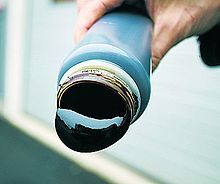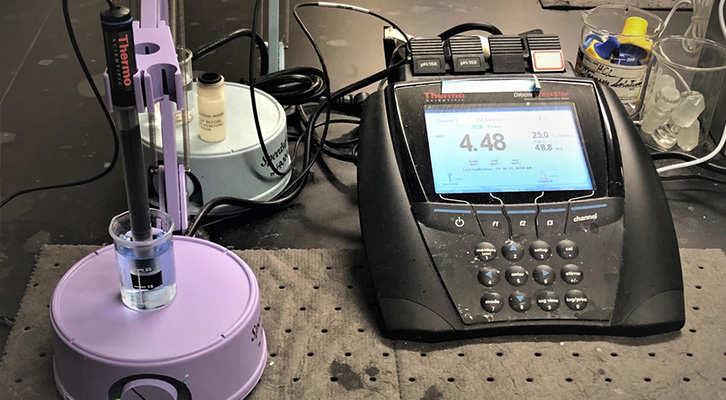Unmanned Surface Vessel (USV) Used to Conduct Hydrographic Surveys
EBS uses an Unmanned Surface Vessel (USV) to conduct Hydrographic Surveys in different bodies of water from clean to wastewater. The USV is equipped with a single...
EBS uses an Unmanned Surface Vessel (USV) to conduct Hydrographic Surveys in different bodies of water from clean to wastewater. The USV is equipped with a single...

The Treatability Lab is always interested in investigating new applications and expanding the knowledge on the capabilities of EBS’s current bioaugmentation...
Continual innovation is an important component of the EBS core value called “Simple yet Profound.” This core value is rooted in the fact that meaningfully applied...

In the Kraft paper-making process white liquor, which is NaOH (sodium hydroxide) and Na2S (sodium sulfide), is used to “cook” wood chips in a piece of equipment...
TSS testing measures the total concentration of suspended (non-soluble) solids in the aeration stabilization basin (ASB) or in effluents. The total suspended solids (TSS) data is critical in determining the operational behavior of a waste treatment system. It is usually a permitted test and solids must be kept at a minimum.
In order to test the total suspended solids, a well-mixed sample should be filtered through a weighed standard glass-fiber filter. The residue left on the filter is dried to a constant weight at a temperature between 103 °C and 105 °C. The increase in the weight of the filter represents the total suspended solids of the sample. Large floating particles or submerged agglomerates of nonhomogeneous materials from the sample may be excluded in the total suspended solids measurements if it is determined that their inclusion is not representative of the entire sample. The size of sampling should also be limited to a size that yields no more than 200 mg residue.
MLSS testing measures the total concentration of mixed liquor suspended (non-soluble) solids in the aeration basin of an activated sludge system. The mixed liquor...

Nitrogen, as ammonia, is a critical nutrient in biological wastewater treatment. It is utilized by bacteria to make proteins, including enzymes needed to break down food or BOD as well as in making energy.
In activated sludge, the two primary symptoms of nutrient deficiency are excessive filaments and excessive polysaccharides or slime. Nutrient deficiency may also cause the production of viscous foam, and impact the jelly-like consistency of the activated sludge which will interfere with the sludge compaction (this is referred to as slime bulking). Excessive filaments and excessive polysaccharides are lesser problems in aerated stabilization basins but are still indicators of nutrient deficiencies. In both aerated stabilization basins and activated sludge wastewater systems, insufficient nutrient availability will lead to poor biochemical oxygen demand (BOD) removal due to the inability of the bacteria to divide and create more workers. This will result in linear biochemical oxygen demand (BOD) removal, rather than exponential or logarithmic removal as expected under optimum conditions.
 The purpose of a microscopic evaluation is to determine the biological health of a wastewater treatment system. The results can be used to help predict Biochemical Oxygen Demand (BOD), Chemical Oxygen Demand (COD), TOC, and TSS results or to determine whether or not to supplement the system with nutrients or bacteria after an environmental upset. The results will also help to determine the degree of toxicity caused by an upset condition.
The purpose of a microscopic evaluation is to determine the biological health of a wastewater treatment system. The results can be used to help predict Biochemical Oxygen Demand (BOD), Chemical Oxygen Demand (COD), TOC, and TSS results or to determine whether or not to supplement the system with nutrients or bacteria after an environmental upset. The results will also help to determine the degree of toxicity caused by an upset condition.
The biological health of a wastewater system can be determined microscopically by observing several features of the samples. Floc is an aggregation of bacteria that produce a polysaccharide coating which enables them to adsorb to chemical contaminants, which they will later degrade for food, and to adere to each other.
The pH of the environment has a profound effect on the rate of microbial growth. pH affects the function of metabolic enzymes. Acidic conditions (low pH) or basic...
Biological waste treatment in the Aerated Stabilization Basin (ASB) process and in Activated Sludge systems is based on the ability of microorganisms to utilize...